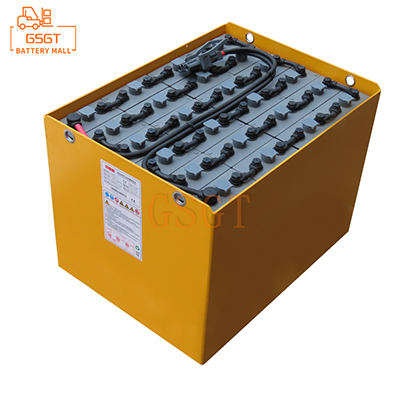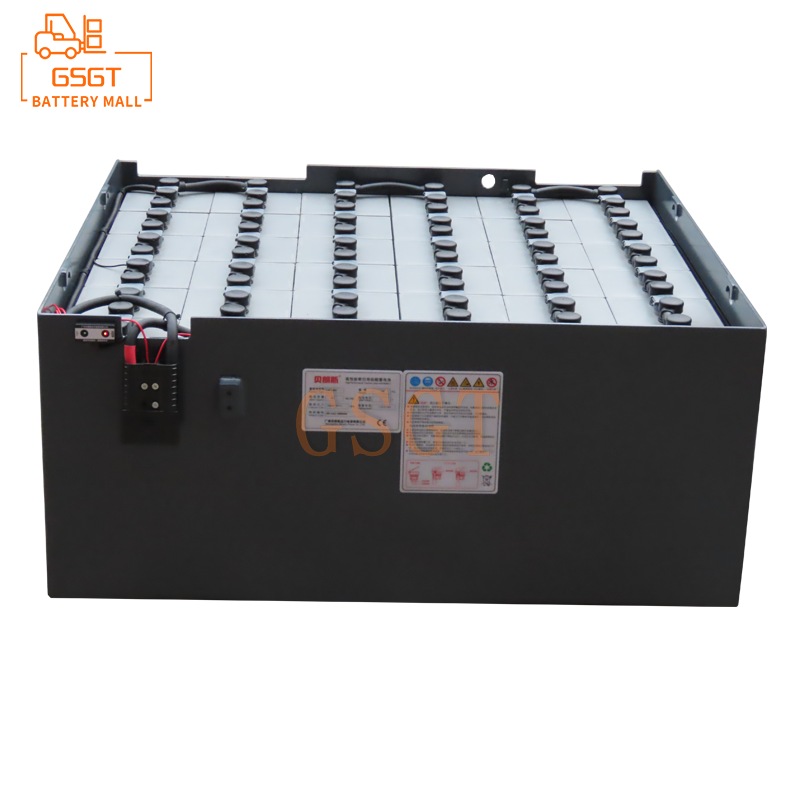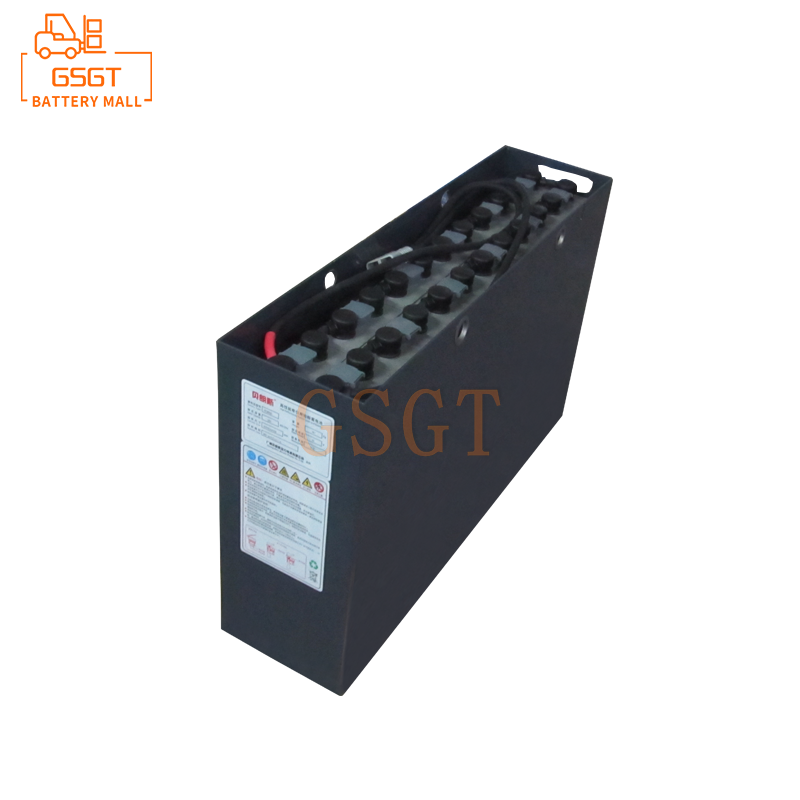Time:2025-05-08 11:27:23
Browse:516
In the modern logistics and warehousing industry, as an important handling equipment, the safe use of lead-acid batteries, the power source of forklifts, is of vital importance. Lead-acid batteries have been widely used in the forklift field due to their advantages such as mature technology and relatively low cost. However, if not used properly, it will not only affect the normal operation of the forklift and the service life of the battery, but also may cause a series of safety hazards, such as fire, explosion, electric shock, chemical burns, etc. Therefore, understanding and strictly adhering to the safety usage regulations of lead-acid batteries in forklifts is the key to ensuring operational safety and enhancing work efficiency.
Ⅰ. Preparation and Inspection Before Use
(1) Installation and Transportation
Lead-acid batteries are usually quite heavy. During transportation and installation, appropriate lifting equipment and tools should be used, such as battery handling carts specifically designed for forklifts. It is strictly prohibited to directly bind the batteries with chains or steel wires to avoid damaging the battery casings. When handling, keep it stable to avoid violent shaking or collision of the battery, and prevent damage to the internal plates and leakage of the electrolyte. During the installation process, it is necessary to ensure that the battery is correctly placed in the battery compartment of the forklift. The positive and negative terminals of the battery must be accurately connected to the electrical system of the forklift, and the connection terminals should be firm and reliable to avoid loosening or poor contact. Otherwise, electric sparks may occur, causing safety accidents.
(2) Visual Inspection
Before each use of the forklift, the operator must conduct a comprehensive visual inspection of the lead-acid battery. Check if the battery casing is damaged or cracked. If the casing is found to be damaged, stop using the battery immediately and contact a professional for handling, as a damaged casing may cause electrolyte leakage, which not only corrodes the equipment and the ground but also may cause chemical burns to the human body. At the same time, check whether the exhaust hole of the battery is unobstructed. If the exhaust hole is blocked, the gas produced by the battery during charging and use cannot be discharged, which will cause the internal pressure of the battery to rise. In severe cases, it may cause the battery to explode. In addition, it is necessary to observe whether there is any electrolyte overflow or crystallization on the battery surface. If so, it should be cleaned up in time and the cause analyzed to determine whether there is a battery fault.
(3) Electrolyte inspection
The electrolyte of lead-acid batteries is mainly composed of sulfuric acid and distilled water, and its state directly affects the performance of the battery. Checking the liquid level of the electrolyte is an important step. Under normal circumstances, the liquid level of the electrolyte should be between the highest and lowest liquid level lines marked on the battery casing. If the liquid level is too low, the plates will be exposed to the air, causing sulfation of the plates and reducing the battery capacity. If the liquid level is too high, the electrolyte is prone to overflow during the battery charging and discharging process. When the liquid level is found to be too low, distilled water or special lead-acid battery replenishment liquid should be added. It is strictly forbidden to add sulfuric acid solution to avoid changing the concentration of the electrolyte and damaging the battery. At the same time, the density of the electrolyte also needs to be checked, which can be measured using a hydrometer. Under different seasons and usage environments, the density of the electrolyte has a certain standard range. If the density does not meet the requirements, adjustments need to be made to ensure the normal performance of the battery.
(4) Electrical connection inspection
Carefully inspect the connection lines between the battery and the forklift's electrical system to ensure that the wires are free from damage, aging, exposure, etc. The plugs and sockets should be tightly connected without any looseness or poor contact. For battery packs composed of multiple batteries connected in series, it is necessary to check whether the connection wires between each battery are firm to avoid overheating due to excessive contact resistance and even causing a fire. In addition, it is necessary to check whether the charging interface of the battery is normal, and whether there is any damage or deformation to ensure the safety and reliability of the charging process.
Ⅱ. Safe Operation during Use
(1) Charging operation
1. ** Charging Environment ** : Select a dedicated charging area with good ventilation, dryness, and free of flammable materials for battery charging. The charging area should be equipped with fire extinguishing equipment such as dry powder fire extinguishers, and clear warning signs should be set up. Smoking and open flames are strictly prohibited. Avoid charging in high-temperature, humid or corrosive gas environments. High temperatures can accelerate the chemical reactions inside the battery, causing it to overheat and shorten its lifespan. A damp environment is prone to causing electric shock accidents. Corrosive gases may damage batteries and charging equipment.
2. ** Charging Equipment ** : Use a dedicated charger that matches the specifications of the lead-acid battery. It is strictly prohibited to use incompatible chargers to avoid damaging the battery or causing safety accidents. Before connecting the charger, first turn off the power switch of the forklift, and then connect the charger to the battery in the correct sequence, that is, connect the negative terminal of the battery first, and then the positive terminal. After charging is completed, disconnect in the reverse order.
3. ** Charging Process Monitoring ** : During the charging process, closely monitor parameters such as the battery's temperature, voltage, and charging current. Under normal circumstances, the temperature during battery charging should not exceed 45℃. If the temperature is too high, charging should be stopped immediately, and the charging equipment and battery should be checked for any faults. Charging can resume only after the temperature drops. At the same time, it is necessary to regularly observe the changes in charging voltage and current to ensure that they are within the normal range. If the charging voltage abnormally rises or the current is unstable, it may be that the battery is faulty. Charging should be stopped and inspection and repair should be carried out.
4. ** Full Charge Judgment ** : When the battery reaches a fully charged state, the charger will automatically stop charging or enter a float charging state. At this point, do not immediately disconnect the charger. Instead, let the battery remain in the float charge state for a period of time to ensure it is fully charged. At the same time, avoid overcharging. Overcharging will cause the battery to heat up, accelerate the aging of the battery plates and the consumption of the electrolyte, and reduce the battery's lifespan.
(2) Discharge operation
1. ** Avoid Excessive discharge ** : Lead-acid batteries should avoid excessive discharge. When the battery level displayed on the forklift's dashboard approaches the minimum limit, the forklift should be promptly driven back to the charging area for charging. Excessive discharge can cause sulfation of the battery plates, seriously affecting the battery's capacity and service life. Generally speaking, when the battery voltage drops to a certain extent, it should be stopped from use and charged.
2. ** Rational Use of Forklifts ** : During the operation of forklifts, the traveling speed and lifting height of the forklift should be reasonably selected based on the weight of the goods and the operation requirements. Frequent sudden acceleration, sudden braking, and long-term heavy-load work should be avoided. These operations will increase the discharge current of the battery, cause the battery to heat up, and accelerate battery wear. At the same time, it is necessary to avoid staying or driving for a long time on the ramp. If it is necessary to work on the ramp, necessary anti-slip measures should be taken to prevent the forklift from rolling back and increase the burden on the battery.
3. ** Prevention of Short circuits ** : During the operation of the forklift, it is necessary to prevent metal tools or other conductive objects from coming into contact with the positive and negative terminals of the battery to avoid short circuits. A short circuit can generate a powerful current, instantly releasing a large amount of heat, which may cause a fire or explosion. Therefore, operators should keep the working area clean and tidy to avoid the accumulation of debris around the battery.
(3) Daily Maintenance and upkeep
1. ** Clean the battery ** : Regularly clean the battery surface. Use a damp cloth to wipe the battery casing to remove dust, dirt and electrolyte residue on the surface, and keep the battery surface dry and clean. Avoid using organic solvents or corrosive cleaners to prevent damage to the battery casing. During the cleaning process, be careful to prevent moisture from entering the battery interior and causing a short circuit.
2. ** Check the connection terminals ** : Regularly check the tightness of the battery connection terminals. If any are loose, use appropriate tools to tighten them. At the same time, check if there is any oxidation on the surface of the terminals. If there is an oxide layer, you can gently sand it with sandpaper and then apply an appropriate amount of Vaseline or special conductive paste to prevent further oxidation of the terminals and ensure good electrical conductivity of the connection.
3. ** Equalization Charging ** : For lead-acid batteries that have been in long-term use, equalization charging should be carried out regularly. Equalization charging can make the voltage and capacity of each battery in the battery pack tend to be consistent, avoiding premature damage to some batteries due to battery differences. Generally speaking, a equalization charge should be carried out every 2 to 3 months. The specific time interval can be adjusted according to the battery's usage frequency and actual conditions.
Ⅲ. Fault Handling and Emergency Measures
(1) Common Fault Handling
1. ** Battery capacity decline ** : If you find that the battery capacity has significantly decreased and cannot meet the normal operation requirements of the forklift, first check whether the battery is over-discharged, undercharged, or has not been equalized for a long time. If the battery capacity remains low after excluding these factors, it might be due to sulfation or aging of the battery plates. For batteries with mild sulfation, they can be repaired by charging with a small current for a long time or by using methods such as pulse repair. For severely aged batteries, new ones need to be replaced.
2. ** Battery Heating ** : If the battery heats up during use or charging, stop using or charging it immediately. Check if the battery connections are loose, if the charging current is too large, and if there are any short circuits inside the battery. If the connection is loose, just tighten the connection terminal. If the charging current is too large, adjust the output current of the charger. If there is suspicion of an internal short circuit in the battery, it should be sent to a professional maintenance institution for inspection and repair.
3. ** Electrolyte leakage ** : Once electrolyte leakage is detected, the forklift should be stopped immediately and corresponding protective measures should be taken. Operators should wear acid and alkali resistant gloves and goggles, use highly absorbent materials (such as sand, rags, etc.) to absorb the leaked electrolyte, then rinse the leaked area with a large amount of clean water, collect the rinsed wastewater, and treat it as hazardous waste to avoid environmental pollution. Meanwhile, check the cause of the battery leakage. If the battery casing is damaged, the battery needs to be replaced. If the seal is not tight, sealing treatment can be carried out.
(2) Emergency Measures
1. ** Fire and Explosion ** : In the event of a fire or explosion in a lead-acid battery, the power supply should be immediately cut off, personnel at the scene evacuated, and dry powder fire extinguishers used to put out the fire. It is strictly prohibited to use water to extinguish the fire, as water may cause the electrolyte to splash and expand the accident area. During the process of extinguishing a fire, pay attention to your own safety and avoid inhaling harmful gases.
2. ** Electric Shock Accident ** : In the event of an electric shock accident, the power supply should be cut off immediately. Use insulating tools (such as dry wooden sticks, bamboo poles, etc.) to separate the person who has been electrocuted from the power source, and then provide first aid to the person who has been electrocuted. If the person who has been electrocuted stops breathing and their heart stops beating, cardiopulmonary resuscitation should be performed immediately, and the emergency number should be called promptly to send them to the hospital for treatment.
3. **Chemical burns**: When a person comes into contact with an electrolyte and gets a chemical burn, the injured area should be immediately rinsed with plenty of clean water for no less than 15 minutes to dilute the concentration of sulfuric acid and reduce the severity of the burn. Then, depending on the severity of the burn, apply the corresponding ointment or go to the hospital for treatment.
Ⅳ. Personnel Training and Enhancement of Safety Awareness
(1) Operator training
All operators of forklifts must receive professional training on the safe use of lead-acid batteries. The training content should cover aspects such as the structure and working principle of the batteries, safety usage norms, common fault handling, and emergency measures. Through training, operators can become familiar with the performance characteristics of lead-acid batteries, master the correct operation methods and safety precautions, and enhance their safety awareness and operational skills. After the training is completed, the operators should be evaluated. Only those who pass the evaluation can be allowed to take up their posts.
(2) Regular safety knowledge promotion
Enterprises should regularly carry out publicity activities on the safe use of lead-acid batteries. Through forms such as posters, bulletin boards, and safety training meetings, they should popularize relevant knowledge among all employees and enhance their safety awareness. At the same time, encourage employees to report potential safety hazards in a timely manner when they discover them at work, and reward those who put forward effective improvement suggestions, so as to create a good atmosphere where all staff participate in safety management.
The safe use of lead-acid batteries in forklifts involves multiple links and aspects, from the preparatory inspection before use, to the safe operation during the use process, to the handling of faults and emergency measures, as well as personnel training and the enhancement of safety awareness. Each link is of vital importance. Only by strictly adhering to safety usage regulations, strengthening daily maintenance and management, and enhancing the safety awareness and skills of operators can the safe and reliable operation of forklift lead-acid batteries be ensured, providing a strong guarantee for the production and operation activities of enterprises, and at the same time avoiding casualties and property losses caused by safety accidents.

$3405

$4045

$1060

$3050

MESSAGE
Professional And Efficient
Security
Affordable Price
Professional Services